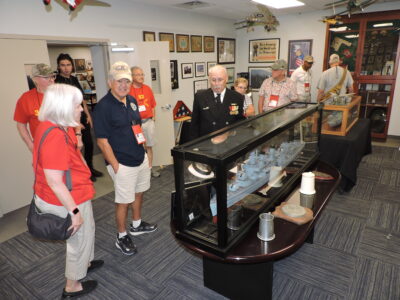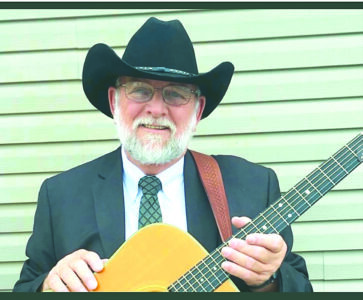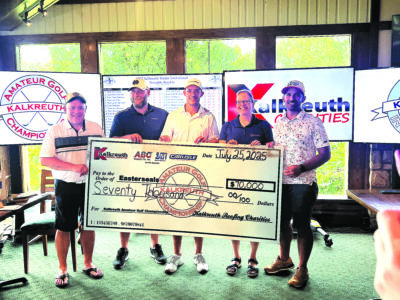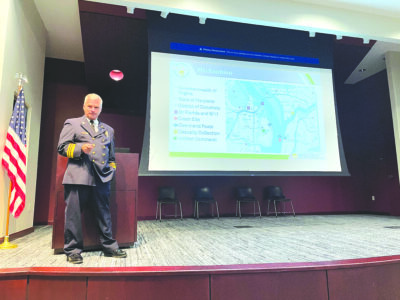Vietnam vets from many states tour Wellsburg museum
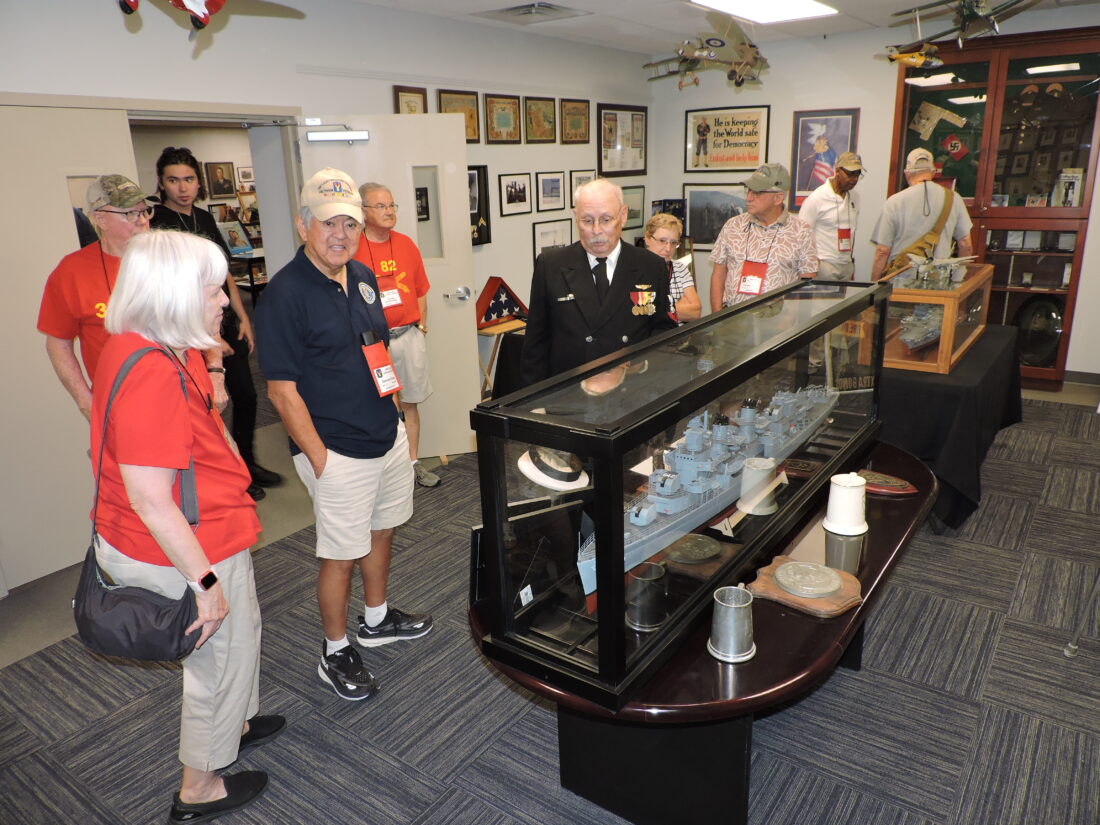
WELLSBURG — Two busloads of Vietnam veterans from many states visited a local museum that has helped to share the experiences of servicemen and women during various military conflicts.
The American Defenders of Bataan and Corregidor Museum and Education Center opened its doors Saturday to many former members of the Army’s 196th Light Infantry Brigade, many of whom came from distant states to attend a reunion of the veterans in Pittsburgh.
Often, they commented on their surprise at finding so many artifacts, photos and other items belonging to veterans like themselves within the Brooke County Public Library.
A number of them took time to share their own stories with the museum’s leaders and volunteers.
Jim Brockman, the museum’s executive director, noted it began with an exhibit within a large cherry wood display case containing photos, maps and excerpts from written recollections of survivors of the Bataan Death March.
It was created by Henrietta Jackfert of Wellsburg and her late husband, Ed, who was among 120,000 U.S. and Filipino troops that fought against Japanese invaders of the Philippine Islands of Bataan and Corregidor during World War II.
Outnumbered and poorly equipped, the Allied troops were defeated after five months in battle.
About 70,000 Americans and Filipinos were captured by the Japanese and forced to walk the Bataan Death March, a 65-mile trek in which many died, succumbing to disease, starvation and extreme heat, or because they had been killed by their captors.
While Jackfert didn’t experience the Bataan Death March, he wanted everyone to know about it as well as the experiences of those who became prisoners of war under the Japanese like himself.
As national commander of the American Defenders of Bataan and Corregidor, an organization comprised of surviving veterans of that part of the war, Jackfert invited fellow members to donate military memorabilia, photos, diaries and other items they had retained from the war.
His effort was carried on by former library director Mary Kay Wallace and her late husband, George, and Brockman and was expanded to include artifacts from other wars.
Brockman told his guests Saturday many of the materials came close to being discarded if not for the museum.
“Our museum is always growing. We want to preserve as much as we can,” he said.
Brockman noted major donations from the Hubbard and Meriwether families led to a 4,000-square-foot expansion to the library and the addition of two large rooms to house the museum’s growing acquisitions.
He noted it’s now considered the largest collection of materials related to World War II veterans who served in the Philippine Islands and has drawn the attention of the History Channel and Japanese television.
Brockman said a special event is planned for Aug. 16 to mark the 80th anniversary of the Japanese surrender that formally brought an end to World War II.
Exhbits on Saturday included a series of sketches depicting aspects of the Bataan Death March that were drawn by the Rev. Candie Blankman of Los Angeles. The daughter of Kenneth Davis, who survived the march, Blankman visited Bataan to retrace its steps for the drawings and a book, “Forged by War.”
One of the drawings shows Davis and others as they appeared — emaciated — when they were liberated from a Japanese POW camp.
A few of the Vietnam veterans shared some of their experiences during their visit.
Carl Fryman of Covington, Ky., noted the 196th Light Infantry Brigade was part of the Army’s Americal Division, which was called such because it was formed to defend the island of New Caledonia during the Japanese’ attack on Pearl Harbor during World War II.
Fryman noted the division included the 11th and 198th Light Infantry divisions and was the largest to serve in Vietnam, with about 26,000 troops.
The division is known by historians for its role in fighting back a surprise attack by the North Vietnamese Army and Viet Cong during the Tet Offensive.
Fryman said he has attended 35 reunions of the 196th Light Infantry Brigade, noting they have been held in various states through the years.
The museum’s guests included brothers Herald and Melvin Watson, East Liverpool natives who both served during the Vietnam War.
Melvin said he was serving on Okinawa, from which B-52 bombing missions to Vietnam were launched, when he observed one of the planes veer off a runway.
He saw bright flames and black smoke, then heard and felt a loud explosion.
“It just about knocked me down,” said Melvin, who added he has suffered hearing lost as a result.
Harold said when he returned to the U.S. from the war, he settled in San Jose, Calif.
He explained his mother had died from a stroke while he was serving and he didn’t know his father, “so I didn’t have any parents to come back to.”
While in California, he met his future wife of more than 60 years, bought a home through a VA loan and pursued a 38-year career with the Postal Service.
But Harold has fond memories of the Ohio Valley, including playing football while attending East Liverpool High School.
“It’s great to be back home,” he said.
Harold also was looking forward to hearing from one of the most famous members of the 196h Light Infantry Brigade: Former Pittsburgh Steeler Rocky Bleier.
Slated to speak to the group Saturday afternoon, Bleier was on patrol when he was shot in the left thigh while his right leg was struck by shrapnel from a grenade.
Bleier, who had been drafted during his rookie season with the Steelers, was told he would not be able to play football again. But Bleier worked hard to recover and went on to be part of the Steelers’ first four Super Bowl-winning lineups.

